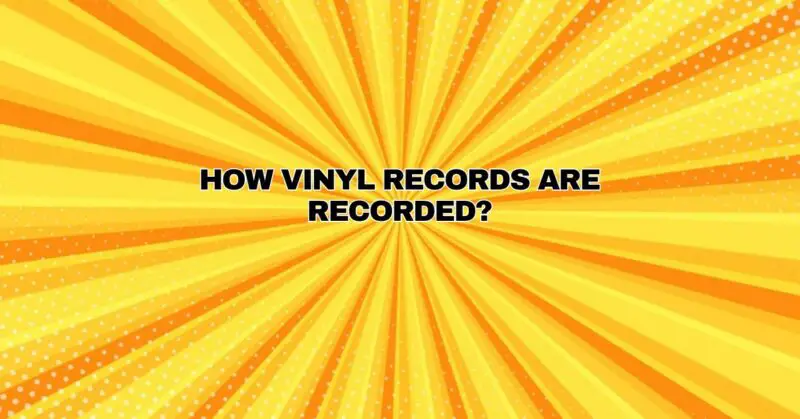Vinyl records, with their iconic grooves and warm analog sound, have been a beloved medium for music playback for over a century. But how are vinyl records recorded in the first place? To understand this fascinating process, we must journey back in time to the early days of recorded sound and explore the intricate steps involved in bringing music to life on vinyl.
The Birth of Recorded Sound:
The story of vinyl record recording begins with the invention of recorded sound. In the late 19th century, inventors like Thomas Edison and Emile Berliner pioneered the technology to capture and reproduce sound. Edison’s phonograph and Berliner’s gramophone were among the earliest devices capable of turning acoustic vibrations into recorded sound.
Step 1: Audio Recording
The recording process typically starts in a recording studio or sound booth. Musicians, vocalists, or orchestras perform in front of a microphone, and their acoustic performances are captured as audio signals. In the early days of recorded sound, this process was entirely acoustic, with sound waves directly vibrating a diaphragm attached to a stylus.
Step 2: Acoustic Recording (Early Days):
During the early days of recording, the audio signals were recorded acoustically onto wax or shellac discs. A horn or megaphone attached to the recording head amplified the sound and directed it onto the recording medium. The mechanical vibrations of the diaphragm caused the recording stylus to inscribe grooves onto the surface of the recording medium. These grooves contained the analog representation of the audio signal.
Step 3: Electrical Recording (Advancement):
As technology advanced, electrical recording became the norm. Microphones captured audio as electrical signals, which were then amplified and fed into a cutting lathe. The cutting lathe had a cutting stylus that directly etched grooves onto a master disc, often made of aluminum or glass coated with wax or lacquer. This electrical recording process allowed for better sound quality and more control over the recording.
Step 4: Creating the Master Disc:
The master disc was a crucial part of the recording process. It served as the template for creating the metal stampers used in the vinyl pressing process. The cutting stylus inscribed grooves onto the master disc, capturing the audio signal in analog form. The depth and width of the grooves represented the volume and frequency of the audio.
Step 5: From Master Disc to Metal Stamper:
Once the master disc was created, it was used to make metal stampers. This was done by electroplating the master disc with a layer of metal, usually nickel. The electroplating process created a negative image of the grooves on the master disc. This negative stamper was then peeled away, resulting in a metal mold that contained the inverse of the grooves.
Step 6: Vinyl Pressing:
The heart of vinyl record production is the pressing stage. Here’s how it works:
- Heating and Pressing: Vinyl pellets, often made from polyvinyl chloride (PVC), are placed into a hydraulic press. These pellets are heated to a precise temperature, softening the vinyl. The softened vinyl is then squeezed between a pair of metal stampers. One stamper shapes the A-side of the record, and the other shapes the B-side. The stampers exert immense pressure to form the grooved pattern onto the vinyl.
- Cooling and Trimming: After pressing, the record passes through a cooling system, solidifying the vinyl. Excess vinyl is trimmed away, leaving behind the final disc-shaped record.
- Label Application: During pressing, labels with printed album artwork and information are applied to the center of the record.
Step 7: Quality Control:
Every vinyl record undergoes a rigorous quality control process. Inspectors carefully examine the records for any defects, such as warping, surface imperfections, or anomalies in the grooves. Records that do not meet the strict quality standards are discarded.
Step 8: Packaging and Distribution:
Once the vinyl records have passed quality control, they are ready for packaging. Records are placed in protective inner sleeves and jacket covers, often featuring artwork and liner notes. The finished records are then distributed to record stores, online retailers, and consumers.
In conclusion, the recording of vinyl records is a meticulous process that blends modern technology with traditional craftsmanship. From the initial audio recording in a studio to the creation of master discs, metal stampers, and the final vinyl pressing, every step is essential in producing the beloved analog format that continues to captivate music lovers worldwide. Vinyl records are not only a medium for music but also a testament to the enduring appeal of analog sound and physical music collections.


